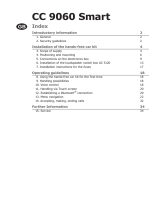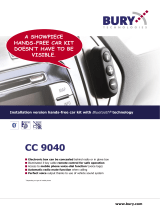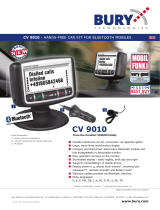
19
Thanks to the Multipoint function, you can connect two mobile tele-
phones simultaneously to CC 9058 via
Bluetooth
. You can operate this
function with the home button. First, activate the system Multipoint
Function (Menu->Settings->Bluetooth->Multipoint->ON). Then
connect the first mobile phone with the system and disconnect it again.
The next step is connecting and disconnecting the second phone. Now,
press the telephone symbol button (call button) and the system auto-
matically connects both coupled phones.
The phone which is connected first gets priority, this means that only
its phone books, call lists and voice tags are uploaded and can be re-
trieved from the HFCK memory.
This is the same situation as if only one mobile phone was connected
to the HFCK. However, if the secondary mobile receives a call then this
call is also taken via the HFCK.
Despite the huge number of tested mobile phones, we can not guaran-
tee that all configurations will be compatible with each other while us-
ing multipoint function.
When the CC 9058 is switched on, the device connects with the mobile
phone which was connected last. The prerequisite for this is that it is
located in the vehicle, that the
Bluetooth
function is activated and the
connection identification to the HFCK is not deleted.
If both mobile phones happen to receive a call at the same time then
the primary phone will get priority. The incoming call on the other mo-
bile will be displayed to you after the first call has been answered or
rejected. Then the first call can be ended quickly and then the second
can also be rejected (both of these steps are taken by pressing the end
button) or the first call can be ended and the second call answered (by
pressing the call button).
It is not possible to put the first caller on hold because both callers did
not phone the same number. Should another phone ring during the call
then the incoming call can be rejected by pressing the end button on
the phone.
























